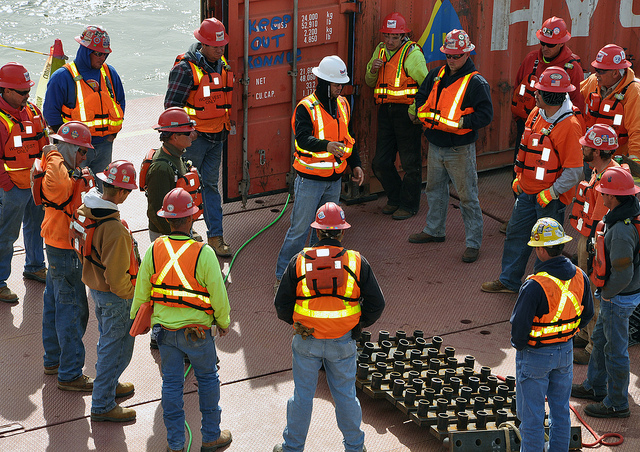Even with appropriate safety policies in place, if there’s not a genuine safety culture at all levels of a company, there will inevitably be costly (and potentially tragic) safety lapses.
Here are three steps for creating a culture where safety is always top-of-the-mind:
1. Raise safety awareness with “safety champions.”
The goal is for everyone in the company to be a safety advocate—not only being safe themselves but looking out for the safety of others.
But even in companies that don’t yet have that culture, there are usually some people who genuinely understand the importance of safety and would like everyone else to share in that understanding. Identify these people and encourage them to be vocal “safety champions.”
This doesn’t have to be a formal program. Think of it more as an internal grassroots campaign. Whatever role they have within the company, these safety champions simply speak up for safety whenever possible—whether it’s in the field or the boardroom.
They can be the seeds from which safety awareness begins to grow throughout the company.
2. Implement safety policies and procedures that support your safety message.
Safety champions can raise safety awareness, but you also need effective safety policies and procedures.
 Even safety-aware personnel can overlook critical safety issues if they’re not following standardized safety processes. And for those personnel that haven’t yet bought into the importance of safety, policies and required safety procedures can at least raise their level of safety.
Even safety-aware personnel can overlook critical safety issues if they’re not following standardized safety processes. And for those personnel that haven’t yet bought into the importance of safety, policies and required safety procedures can at least raise their level of safety.
Gradually, these requirements can’t help but make them more aware of the hazards of their jobs—strengthening the overall safety culture.
Mandatory safety education and training is an obvious safety policy that supports safe practices, while also increasing safety awareness.
Another example is the required use of The Checker’s safety inspection checklists before each use of equipment. If “safety slackers” have to use The Checker, they’ll be much safer than otherwise, and usually this daily routine causes them to eventually “internalize” the importance of safety.
3. Truly reward safe behavior.
A company can’t expect to spread a safety culture if it doesn’t back up its desire to be safer with monetary rewards.
All personnel have a personal interest in safety (no one wants to be hurt!), but they show up to work to earn a living. Companies will save a considerable amount of money if they successfully create a safety culture, and it only makes sense to share in those savings with the people making them possible.
Recognition (e.g., a mention in a newsletter, a plaque on the wall for “safety employee of the month”) is nice, but what really reinforces the message that safety matters is financial rewards (e.g., raises, promotions, bonuses) for personnel who achieve safety goals and for those who champion safety.
Takeaway
To create a safety culture at your company, begin with internal safety champions, reinforce your safety message with policies and procedures, and back up the message with financial rewards for safe behavior and attitudes.
Image courtesy of LouisvilleUSACE (U.S. Army Corps of Engineers), Creative Commons.











